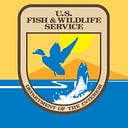American Indians and Conservation Artist Series Featuring Dustin Twiss
Earlier this year (2021), the U.S. Fish and Wildlife Service Museum and Archives commissioned three Indigenous artists to create contemporary art for its permanent museum collection. Each of the artworks will be featured in the museum exhibit, American Indians and Conservation, which is scheduled to open in late 2022 at the Service’s National Conservation Training Center in Shepherdstown, West Virginia.
Follow along the blog series to learn about the individual artists and their creation that will be an integral part of the upcoming American Indians and Conservation exhibit.
Meet Dustin Twiss of the Oglala Sioux in South Dakota!
What inspired you to be an artist?
Dustin: “I have enjoyed drawing and sketching ever since I can remember. I grew up watching my Grandma create traditional art and that had a lasting impression. For many Native Americans, I think art is just a natural part of everyday life. There is no Lakota word for ‘art,’ it’s just a part of who we are.”
What art medium did you use?
Dustin: “This image was done with colored pencil on paper.”
What inspired you to create this drawing?
Dustin: “I design drawings by using the natural pattern found within the Fairburn Agate, South Dakota’s state gemstone. These stones are found locally on our reservation, and I was mesmerized by its captivating natural beauty at first sight. I combine my appreciation of nature and culture within my artwork to help share traditional Lakota knowledge.”
What is the significance of this art?
Dustin: “When creating a new image, I try to portray the Lakota philosophy, ‘Mitakuye Oyasin’ or ‘We are all related.’ I try to reflect ‘Inyan,’ an important sacred identity in the Lakota creation story. ‘Inyan’ translates to ‘rock’ or ‘the first’ and shows us our connectedness and is still about.”
Why does conservation matter to you?
Dustin: “From the Creator and ‘Inyan,’ all else comes. The Earth, Water, Sky and Sun, and everything within is sacred. The Lakota do not view all that is, as things and objects but as Relatives. Everything is bound by this relationship and deserves respect. Conservation is part of that respect and responsibility to our Relatives.”
Written by Kevin Pourier, Mikaela Oles, and Steve Floray with contributions from Melissa Castiano, Melissa Gonzalez
